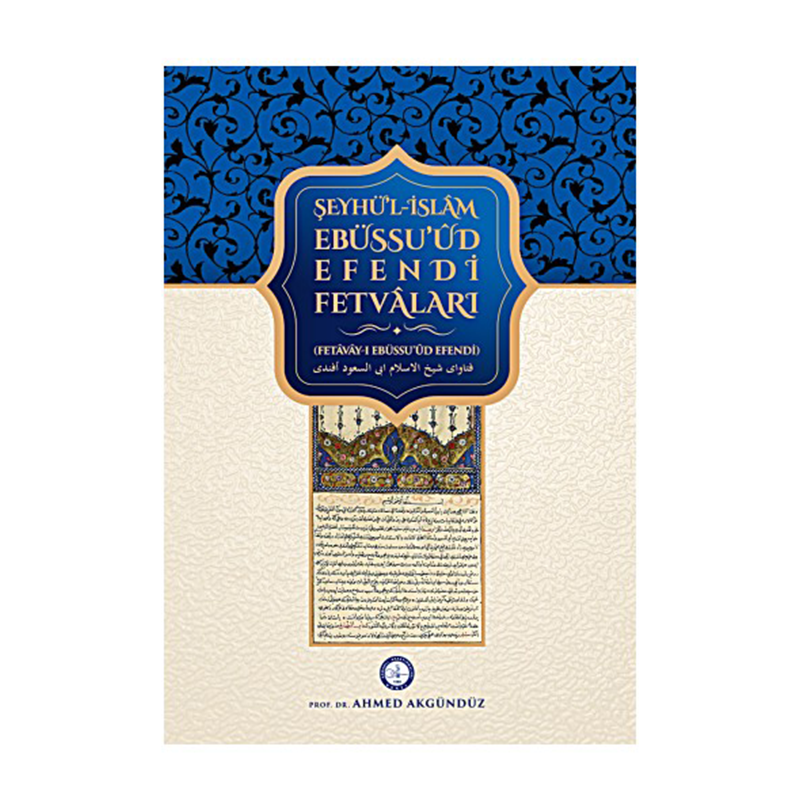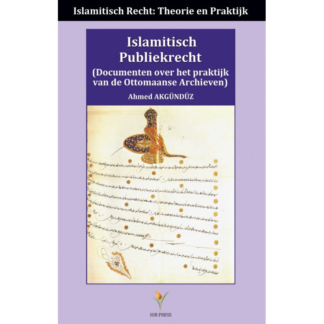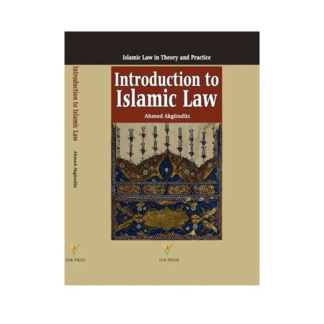Description
Between 1983 and 1985, when I was writing my Ph.D. thesis on the Foundation, the most important sources were Sheikh-al-Islam Ebussuʻûd Efendi Fetâwâs. I was based on version of Veli bin Yusuf. Sheikh-al-Islam Ebussuʻûd Efendi Fetâwâs were very different from other fatwas; it was actually more like a book of jurisprudence than a Fetâwâs. The right of Gedik and his fatwa about Muhyiddin Araby reminded me of today’s master theses.
There were three other characteristics that differed from the other ones: First, most of the fatwa books were taken from jurisprudence books. Secondly, the basic subjects have not been neglected with the fetuses of the earlier Sheikh-al-Islam or the great scholars. The third was the importance of the fatwa.
We know that in the history of Ottoman law, the fatwa were divided into three: 1) The legal opinions given by the muftis or the great scholars were religiously binding. 2) But the fatwa of the Shaykh al-Islams was called the fetwây-ı şerîfe, and all Muslims and muftis were binded like the precise decisions. 3) If the fatwas of Shaykh al-Islams were approved by Sultân or Caliph and declared as law, all the citizens of the Memâlik-i Mahrûse were becoming like the other laws, which were found in the Shaykh al-Islam Sheikh-al-Islam Ebussuʻûd Efendi Fetâwâs and separately under the name of Maʻrûdhât they were compiled legal rules.
That is why I think of the Sheikh-al-Islam Ebussuʻûd Efendi Fetâwâs, which came to Istanbul in 1986 when I came to Istanbul. Since I was busy with the big project of the Ottoman Laws, I called my brother Vahdet Yilmaz and my assistant Osman Kasikci to help me. But it did not work as we wanted this project filled with difficult stipulations and stayed for 20-30 pages. The Ottoman Legal Codes project was completed in 11 volumes. With the help of friends, I have also completed translating Sheikh-al-Islam Ebussuʻûd Efendi Fetâwâs into roughly Latin letters. But the real hard work started here. Because the correction of the needles one by one; It was the hardest part of the job to prepare the Arabic devotees by writing them in accordance with their original form and comparing them to the important, if not all, with other copies. In the meantime, we heard that Veli bin Yusuf’s Majmûʻah with us simultaneously as by Assoc. Abdullah Demir and by Assist. Ramazan Günay also prepared for publication. However, as far as we can see, both were not received in Arabic language; We have deemed it appropriate to disseminate due to the deficiencies of both transcription errors, serious errors in the standards and not to bring the titles into Turkish.
We said this enough for this project, and we decided to take a hand in the other Risâlahs and detached fatwas of Ebussuʻûd Efendi, which had constituted the golden pages of our legal history of the Ottoman law. Thus, this work, which we have published under the name of Sheikh-al-Islam Ebussuʻûd Efendi Fetâwâs, consisted of two parts and these parts were composed of many parts:
The FIRST PART is composed of three parts.
In the first part we briefly talked about Ebussuʻûd Efendi ‘s life, legal personality and his works. However, we refer this issue to the comprehensive work entitled Ebussuʻûd Efendi and His Fetâwâs by Behlül Düzenli by OSAV. In fact, we strongly recommend that everybody should also this book present his / her book to the library.
In THE SECOND chapter, we have elaborated on the Sheikh-i-Islam Sufis of Islam. We gave a general information about all the Fetâwâs of Sheikh-al-Islam Ebussuʻûd Efendi. In this section, we consider the work of Behlül Düzenli in a significant way.
In the THIRD chapter, we prepared the version of the Veli bin Yusuf, who was a student of Sheikh-al-Islam Ebussuʻûd, by comparing with some basic copies. Our basic three copies:
1) The Süleymaniye Library is the no. 223 in Ismihan Sultan, the most important characteristics of which are the following: The copy is complete. The old Turkish language, which is particularly difficult to read, has often been operated. Unfortunately, the impossibility of the conception, Arabic scripts are full of mistakes. This copy, 20 has been written 1049/21 July 1639 by Mustafa bin Abdülbârî.
2) The Süleymaniye Library is no. 1069 in Şehid Ali Pasha, which is an extra-ordinary manuscript. Arabic verses are largely written without errors. Turkish scripts is also very good. This copy 10 Şevvâl in 1048 was probably referenced by a man named Ali Çelebi.
3) Tüyotak Manuscripts, 19 HK 1696, which some part is missing. However, there is an Arabic phrase at the introduction that is not found in any of the other manuscripts.
The SECOND PART is compiled by Sheikh-al-Islam Ebussuʻûd’s exclusive Risâlahs and detached fatwas. It consists of three chapters.
In the first part, it was allocated to the important Risâlah, which was actually found in the works of Sheikh-al-Islam Ebussuʻûd. In the 15 headings, the Maʻrûdhât are presented to the Sultan. It was legalized.
In the second part, the allocation to the exclusive Risâlah and detached fatwas related to the Foundation Law (Awqaf). The first treaty that we have published here is in the Süleymaniye Library, manuscript in the section of Vehbi Efendi in Baghdad. The second Risâlah is the Gedik Risâlah which is actually located in the Fetâwâs of Sheikh-al-Islam Ebussuʻûd Efendi. Third Risâle is a fatwa of Ebussuʻûd Efendi, written in Arabic on the question of Süleyman Suleiman and related to the Foundations. Library of Suleymaniye, Yeni Mosque, No: 376, Vrk. based on the copy of 169-178. In the fourth Risâlah, we have deemed it appropriate to publish the Critics of Çivi-zâde to Ebüssu’ûd in Cash Money Foundations. It is important that this Risala be published when everything is known as the opposite. Risâle, Süleymaniye Library, Reşid Efendi Department, Number 1177, Vrk. 142-144. Fifth, we also published an independent Risâlah related to the Muʻâmalah Sharʻiyyah.
In the third and last chapter, we have published some Risâlahs and detached fatwa related to land, criminal and financial law. First of all, we delivered an Risâlah of Ebüssuʻûd, which is very important in terms of Ottoman land and financial law. This is Risâlah, Süleymaniye Kütp. Reşid Efendi, No: 1036, Vrk.33 / b-37 / a. In the second, we have published the fetâwâs of both Ebüssuîûd and Ibn-i Kemâl in the about Ottoman Land. In the third, we found it appropriate to have an independent fatwa related to the system of Malikâne-Dîvânî. In the fourth, we added the fatwa related to the brother killing, including the fetâwâs of Ebüssuʻûd.
When the translation of this Majmûʻa, which is dominated by the fatâwas of Ebüssuʻûd Efendi, came into question, the first question of how to translate it was discussed. Because XVI. these fatawas, which were brought together in the 16th century, were transcribed, and the issue of the use of letters in the Arabic alphabet used by the Ottomans, but which were not found in the Latin alphabet, emerged. Relevant to this issue, the use of words as much as possible in order to exhaust the reader is tried to be based on these days. However, in doing so, the origin of the words have not been removed in order not to break with the merits.
The fetâwâs in Majmûʻa is mostly composed of Turkish records. There are also Arabic fetâwâs and few Persian records. These records can be divided into two parts:
The first one is the Arabic transplants taken from the books of Fiqh in the nature of their fetâwâs. We have written these records which we call Mustenidât Sharʻiyyah. We didn’t see the need to translate them. The Persian records are mostly versatile fetâwâs and they have been translated and added to the text.
The second one is the Arabic titles that make up the topics. We have given both the original Arabic and the Turkish translation. Because, if they did not have their translation, we thought that the Turkish reader would always find what he wanted to do in fetâwâs.
Thirdly, the second part of the book is added to the book as a separate part of the book.





